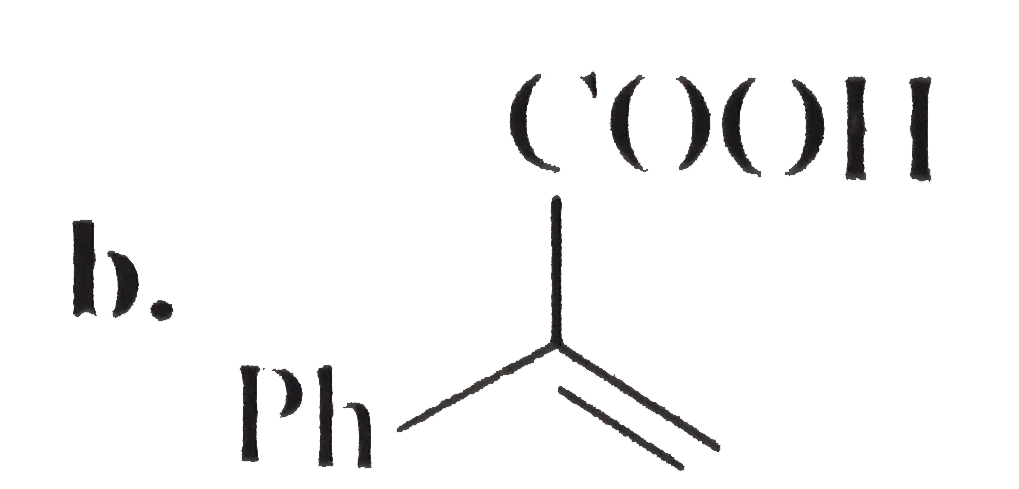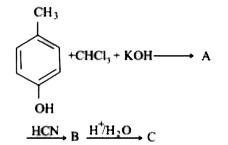(a) Discuss the important physical properties of carboxylic acids.
(b) Discuss the structure of carboxylic acids. How do you account for acidic character of carboxylic acids ?
Text Solution
(a) Physical properties of carboxylic acids. The important physical properties of carboxylic acids are given ahead :
(i) The first three members of the carboxylic acids are colourless and have pungent smell. The next six members are oily liquids with a faint unpleasant odour. Thereafter, they are colourless waxy solids. Benozic acid and its homologues are colourless solids.
(ii) The first four members are very soluble in water and the solubility decreases gradually with the rise of molecular mass. However, all are soluble in alcohol or ether. Benzoic acid is sparingly soluble in cold water but is soluble in hot water, alcohol, ether.
(iii) Lower carboxylic acids (upto C10) are volatile in steam while higher members are non-volatile.
(iv) They have higher boiling points than the corresponding alcohols of comparable molecular masses. This is due to the fact that a pair of carboxylic acid molecules (known as dimers) are held together not by one but by two hydrogen bonds :

(b) Structure of carboxylic acids. Carboxylic acid is planar molecule in which the carbon atom of carbonyl group  is sp2 hybridised. It is bonded to the oxygen atom of OH group and the carbon atom (or H atom) with the help of σ bonds. It is a resonance hybrid of the following structures :
is sp2 hybridised. It is bonded to the oxygen atom of OH group and the carbon atom (or H atom) with the help of σ bonds. It is a resonance hybrid of the following structures :

It is clear that in the resonance hybrid (structure II) the oxygen atom of a hydroxyl group carries some positive charge. Consequently, the electron pair of the O-H bond is displaced towards oxygen atom. This displacement of electron causes the release of a proton and a carboxylate ion, RCOO−, is formed.
Carboxylate ion The carboxylate ion thus formed is also a resonance hybrid of structures III and IV as shown below :
Thus, we observe that carboxylic acid as well as its anion are resonance stabilised. However, we compare these structures, we observe that carboxylic acid stabilised) structures (I and II) are not cquivalent while carboxylate ion structures (III and IV) are equivalent. Therefore, the carboxylate ion is more resonance stabilised by the resonance. Thus, carboxylic acids readily give proton to form more stable carboxylate ion.
|
Topper's Solved these Questions
- ALDEHYDES, KETONES AND CARBOXYLIC ACIDSBOOK - MBD -HARYANA BOARDCHAPTER - ALDEHYDES, KETONES AND CARBOXYLIC ACIDSEXERCISE - SHORT ANSWER TYPE QUESTIONS
35 Videos
- ALCOHOLS, PHENOLS AND ETHERSBOOK - MBD -HARYANA BOARDCHAPTER - ALCOHOLS, PHENOLS AND ETHERSEXERCISE - LONG ANSWER TYPE QUESTIONS
7 Videos
- BIOMOLECULESBOOK - MBD -HARYANA BOARDCHAPTER - BIOMOLECULESEXERCISE - Long Answer Type Question
7 Videos
Similar Questions
Knowledge Check

Carboxylic acid (A) is:A B
B C
C DBoth (a) and (c )
DBoth (a) and (c )Which of the following structure of carboxylic acid accounts for the acidic nature
A B
B C
C DNone of these
DNone of theseThe acidic nature of carboxylic acid is due to
Ahigh degree of ionisation of acidBgreater resonance stabilization of the acidCgreater resonance stabilization of its anionDall of the above

